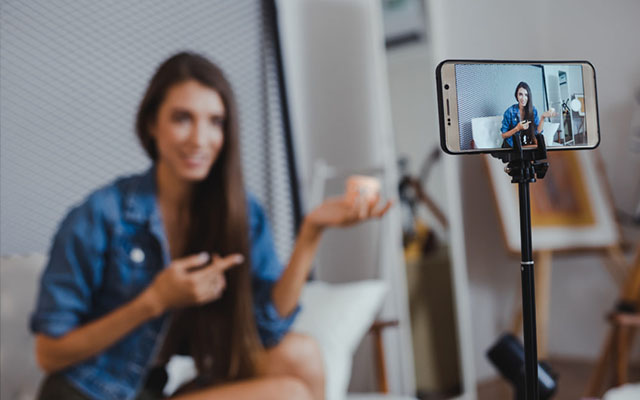Written for Casting Networks News by Terry Berland @berlandcasting.
Commercial creative teams took only about three days after the stay-at-home order to adjust commercials to reflect the current situation by changing the voiceovers of existing spots. After about ten days, new spots started appearing on the air conceived and shot by the very creative, innovative commercial creative teams.
Submit a Good Self-tape Audition
Of course all auditions are self-taped. If there is dialogue, have a solid background with good lighting. A simple setup will do, using a halo light, a tripod, and a smartphone.
How to Be Sure Your Submission Is Considered
Labeling Instructions: Follow the instructions from the casting director very carefully. Instructions could be as specific as instructing you to use a dash/hyphen or an underscore. Consider yourself to now be a part of our organizational team. With the staggering amount of details, there will be no time for casting to correct and redo. Framing: Follow the direction regarding the slate and the framing. Many auditions now are inclusive of your home environment. Most actors are concerned with how neat the home should be. Keep it neat but looking livable. You will usually be given some scenario as to what the shot should resemble. These shots usually means there will be some moving around. This will mean you have to rehearse a couple of times to know what your phone camera on the tripod is capturing.
Transfer Method: Instructions will also be specific as to what transfer method to use for delivery. To bring you firsthand information, I sat down and spoke to actor couple Danni and Jeff Gadigan, who just finished shooting a commercial.
The Callback
Danni and Jeff had to log in to a Zoom meeting, where someone from production connected with them and instructed them to a waiting room. There you are figuratively “on deck” for about ten minutes. They were instructed to use a phone or laptop for the callback. Having been given general information about the scene, Jeff decided to use a laptop because he had more latitude to change the range of the shot. Danni and Jeff, along with their one-year-old baby, were directed to do certain actions in a scene. Their dog happened to jump in, and all four got booked.
The Prep for the Shoot Day
Great organization on the production company’s end was key. First, Danni and Jeff were sent a guidebook point-by-point explaining what would take place. There was then a general Zoom call including everyone who was cast from different households. This call was a time for everyone to see each other, learn about the idea of the story, get more comfortable, and go over the guidebook. Then the following day started meetings for about one hour each with the different departments, combing through details.
Wardrobe
Clothing was laid out and photos were taken to send to the Wardrobe Department.
Location
There was a Location Scout meeting call to look over locations. Lighting is considered and how the space fits into the story of the spot. In addition, a Production Designer called to guide them with the setup of the decor. These designers have a keen eye to make sure no labels identify products to avoid copyright branding issues.
Equipment Delivery
A courier delivered a box with all the camera equipment that was needed to shoot. In Danni and Jeff’s case, it was two iPhones. Some shoots have camera kits delivered. Next, there is a scheduled Zoom call with a tech person to go over everything in the box and how to set it up.
Rehearsal
There is a rehearsal with the director which includes performance, blocking, and selecting the frames of the shots. Jeff had to tape off where the tripod was to go and where they would be moving around. Everyone took screenshots for their own records.
The Shoot Day
Each family had their own time slot. Production called an hour early to again go over all the shots. The phones had apps downloaded by production that fit their tech needs. The final shoot for Danni and Jeff took about two hours. A continual chain of communication was going on behind the scenes between production and clients seeing everything in real time. The client had typical feedback regarding what they wanted included in the shot and then changing the shot several times. Of course, in the current situation, the actor had to make all the changes. Danni and Jeff had their baby involved which meant they were juggling the baby, their action, and camera action simultaneously.
After the Shoot
After the shoot, someone in production walked each family through uploading and sending the video. Shoot done! The next day the equipment was picked up. I asked Danni and Jeff what they missed about a traditional shoot, and in good humor, Jeff answered, “craft service!” He said as an actor, being involved with the production and shooting process was actually a very good, valuable, insightful experience.
If you want to sharpen up on your commercial acting technique, follow this link to Terry Berland’s Commercial Acting workshop.









